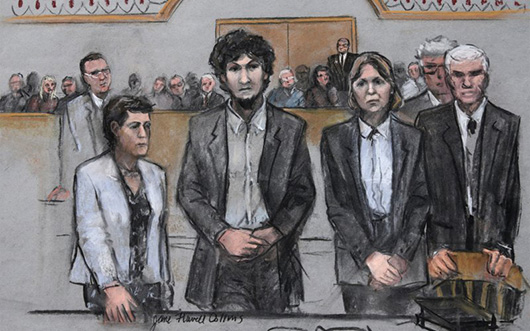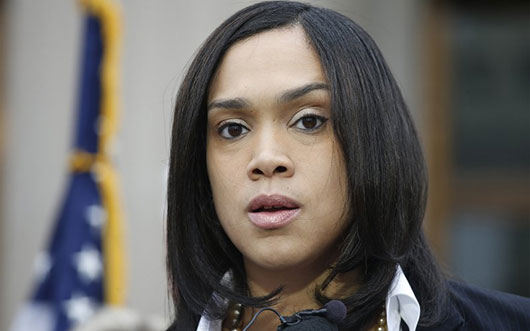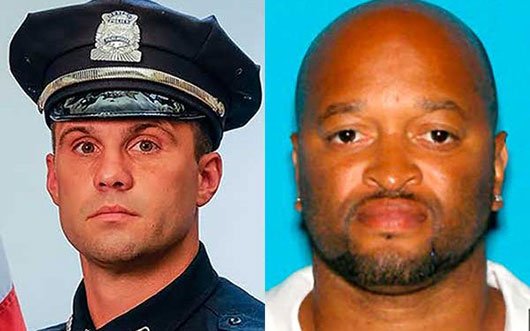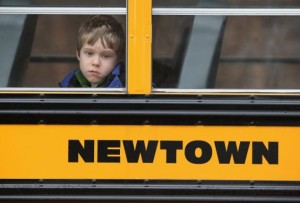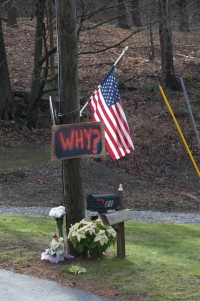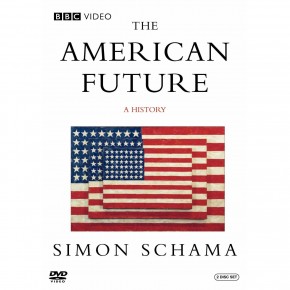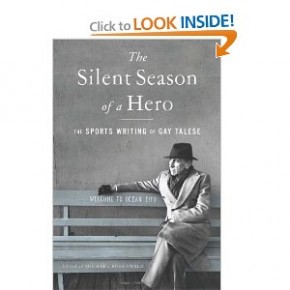In his latest column for The Daily Beast, Mike Barnicle juxtaposes the lives and death sentences of Pfc. John Hart, 20, killed outside Baghdad, and Dzhokhar Tsarnaev, the now convicted and sentenced Boston Marathon bomber. Unfortunately, it will be Tsarnaev’s name in the news over the next few years, when our focus should be on remembering and honoring Pfc. Hart, his life, and his service.
Read his column here.
https://www.thedailybeast.com/articles/2015/05/17/dzhokhar-tsarnaev-a-death-deserved.html
Writing for The Daily Beast, Mike tells us more about Baltimore prosecutor Marilyn Mosby, who Friday announced that six Baltimore police officers would face felony charges in the death of Freddie Gray. The young lawyer’s own cousin, Diron Spence, was gunned down more than 20 years ago on the street in Boston. Spence and Gray, both young black men, were not safe, as Mike says, on streets that were – and continue to be – paved with danger for America’s poor. Read his column here.
https://www.thedailybeast.com/articles/2015/05/03/when-marilyn-mosby-s-cousin-was-killed.html
For The Daily Beast, Mike weighs in on the tragic shooting of a decorated Boston Police Department (Official) officer this weekend by a career criminal and how the gunfight is viewed by bystanders, despite the camera that captured it all. “The truth today is that one young police officer, brave and without fear, fights for his life in a hospital while another man, a wrecking crew all by himself, is dead.”
https://www.thedailybeast.com/articles/2015/03/29/a-boston-cop-shooting-and-our-post-truth-era.html
FBI agents and other officials protected James “Whitey” Bulger as he roamed free for decades. Is there a statute of limitations on corrupting the system?
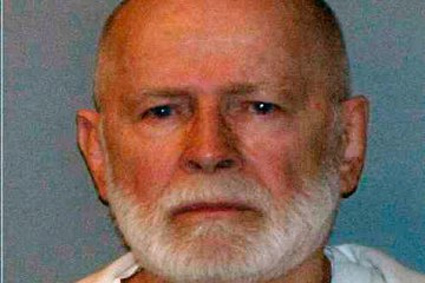 Occasionally, there is more eloquence in a single word than in a string of finely crafted statements. Today was one of those moments as James “Whitey” Bulger stood and listened while that one word — guilty — was repeated 31 times in federal court in Boston: guilty of multiple counts of racketeering, extortion, drug dealing and, most importantly, guilty of 11 murders.
Occasionally, there is more eloquence in a single word than in a string of finely crafted statements. Today was one of those moments as James “Whitey” Bulger stood and listened while that one word — guilty — was repeated 31 times in federal court in Boston: guilty of multiple counts of racketeering, extortion, drug dealing and, most importantly, guilty of 11 murders.
A jury sat for 35 days of testimony, listened to 72 witnesses, heard about homicides coldly committed as if they were an element of some business balance sheet, a buyout with bullets, Bulger as sort of a combination of CEO and risk officer of his own murderous hedge fund. And across all the decades he always bet his future against his victim’s lives and continually won because he had a merger agreement with the FBI, literally partners in crime.
Years ago, when his brother Bill was a state senator from Boston, I indicated that no drug — heroin, cocaine, marijuana — moved in South Boston, Bulger’s own neighborhood, without James’ knowledge. Bill took great offense at the charge and told me that I didn’t know what I was talking about and that he, Bill Bulger, had been assured by people who knew far more about drug trafficking than I did that I was flat out wrong. His source: the FBI, specifically John Connolly, a former agent now serving a 40-year sentence in Florida for conspiracy to commit murder.
The victims were John Callahan, shot to death in Florida in 1982, and Roger Wheeler, killed in Oklahoma in 1981. They died because James Bulger was afraid they might cooperate with the law against him. Connolly allegedly told Bulger about the threat they posed to him. So both guys were murdered by John Martorano, who killed many, many people — dozens — for a living as part of the thriving, prosperous, criminal growth industry Bulger ran for over three decades. Of course, Martorano is free today to walk in the sun, go to the beach, the movies or a ball game because he cut a deal with the government: his testimony in exchange for his freedom.
And that gets to one of the questions that linger at the successful conclusion of Bulger’s trial: How is that so many former FBI agents along with an assortment of former Justice Department lawyers from the 1980s and ’90s were not required to testify about what they knew and when they knew concerning the fact that so many seemed aware that the FBI acted as a virtual bodyguard, a protector, of Bulger, in some cases actually obstructing Boston and Massachusetts State Police detectives who were after him? Is there a statute of limitations on corrupting the system?
It sure is understandable that the U.S. Attorney’s Office in Boston wanted an efficient trial so it clearly couldn’t call everyone to testify. They had a mountain of evidence to introduce and the prosecution team was skilled, more than capable and had been ready for years for this moment. But as they lug Bulger off to federal prison where he, an aging sociopath and killer, will surely die, there are more than a handful who used to carry a badge or represent the law who turned their eyes and dropped their duty all the while one man ruined so many lives, figuring he could operate under his own personal consent decree issued by our very own government.
It took a jury to finally point out the truth. And they did it 31 times, using the most powerful weapon of all, the one simple word: guilty.
PHOTOS: The Many Looks of James ‘Whitey’ Bulger
An earlier version of this article misspelled the surname of James Bulger’s hit man. He is John Martorano, not Martarano.
Now we witness a regiment of the wounded, the survivors, burying a whole company of the young dead in a small New England town filled with a grief that simply cannot be measured.
Monday’s dead babies were Jack Pinto and Noah Pozner, both 6 years old. Tuesday’s funerals saw James Mattioli and Jessica Rekos, again, only 6, their small coffins shocking to the senses, carried through the chill mist to graves one week before Christmas and mere hours after the conclusion of Hanukkah.
The week ahead will witness 16 additional sets of services for the youngest of victims claimed by the madness that occurred Friday in Connecticut. The murders go in the books alongside all the other historical tombstones of mass homicide that have taken place in a country, our country, where it is easier to buy an assault rifle than it is to get an appointment with a psychiatrist: Virginia Tech, Tucson, Aurora, Newtown.
However, this time is different. This time the shock, horror and revulsion will be more permanent, have more enduring impact because of three numbers:
20
6
7
The numbers, of course, represent the body count of tiny casualties and their ages. And the impact on the nation’s soul is obvious to anyone who has ever raised a child: Walk a 6-year-old son or daughter to a school bus stop early in the morning while holding their hand and you recall the touch forever.
Look around at home and you will find pictures of your 7-year-old in a Little League uniform, your 6-year-old wearing a ballerina’s dress, smiling a toothless grin. These are the freeze frames of the emotional portion of lives normal people live, average lives distant from the politics and cable chatter, texting and tweeting that consumes so many among us, most of it granted unwarranted importance.
This time, homicide came for our children. It blasted through a schoolroom door, instantly claimed five teachers and a principal who had more courage facing a real rifle than many public people have when confronting a gun lobby. It then turned left and instantly emptied a clip into the youngest, most innocent among us, first grade kids.
So now those numbers — 20, 6, 7 — will perhaps finally force the president and politicians in Congress to give America a small element of common sense, a defense against insanity: a law that makes it impossible to purchase — across a counter, at a gun show or online — a weapon made for war from a store located in a shopping mall.
So now, with another year rushing toward the finish line, the whole country carries the weight of sadness contained in all the small caskets of Newtown.
Few things are more satisfying to adults than the sight and sound of a child’s laughter and gleeful grins of anticipation provoked by a season of joy. Yet on a day when the sky was a gloomy gray, a single village was consumed with the terrible task ahead of burying 16 more children whose happiest moments are now a memory.
Barnicle is a print and broadcast journalist.
Deadline Artists: America’s Greatest Newspaper Columns
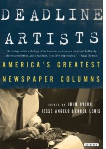
Edited by John Avlon, Jesse Angelo & Errol Louis
At a time of great transition in the news media, Deadline Artists celebrates the relevance of the newspaper column through the simple power of excellent writing. It is an inspiration for a new generation of writers—whether their medium is print or digital-looking to learn from the best of their predecessors.
This new book features two of Mike’s columns from The Boston Globe. The book says, “Barnicle is to Boston what Royko was to Chicago and Breslin is to New York—an authentic voice who comes to symbolize a great city. Almost a generation younger than Breslin & Co., Barnicle also serves as the keeper of the flame of the reported column. A speechwriter after college, Barnicle’s column with The Boston Globe ran from 1973 to 1998. He has subsequently written for the New York Daily News and the Boston Herald, logging an estimated four thousand columns in the process. He is also a frequent guest on MSNBC’s Morning Joe as well as a featured interview in Ken Burns’s Baseball: The Tenth Inning documentary.”
Read the columns here (you can buy the book by clicking here)
“Steak Tips to Die For” – Boston Globe – November 7, 1995
Those who think red meat might be bad for you have a pretty good argument this morning in the form of five dead guys killed yesterday at the 99 Restaurant in Charlestown. It appears that that two late Luisis, Bobby, the father, and Roman, his son, along with their three pals, sure did love it because there was so much beef spread out in front of the five victims that their table-top resembled a cattle drive.
“All that was missing was the marinara,” a detective was saying yesterday. “If they had linguini and marinara it would have been like that scene in The Godfather where Michael Corleone shoots the Mafia guy and the cop. But it was steak tips.”
Prior to stopping for a quick bite, Roman Luisi was on kind of a roll. According to police, he recently beat a double-murder charge in California. Where else?
But that was then and this is now. And Sunday night, he got in a fight in the North End. Supposedly, one of those he fought with was Damian Clemente, 20 years old and built like a steamer trunk. Clemente, quite capable of holding a grudge, is reliably reported to have sat on Luisi.
Plus, it is now alleged that at lunch yesterday, young Clemente, along with Vincent Perez, 27, walked into the crowded restaurant and began firing at five guys in between salads and entrée. The 99 is a popular establishment located at the edge of Charlestown, a section of the city often pointed to as a place where nearly everyone acts like Marcel Marceau after murders take place in plain view of hundreds.
Therefore, most locals were quick to point out that all allegedly involved in the shooting—the five slumped on the floor as well as the two morons quickly captured outside—were from across the bridge. Both the alleged shooters and the five victims hung out in the North End.
However, yesterday, it appears, everyone was playing an away game. For those who still think “The Mob” is an example of a talented organization capable of skillfully executing its game plan, there can be only deep disappointment in the aftermath of such horrendous, noisy and public violence.
It took, oh, about 45 seconds for authorities to track down Clemente and Perez. Clemente is of such proportions that his foot speed is minimal. And it is thought that his partner Perez’s thinking capacity is even slower than Clemente’s feet.
Two Everett policeman out of uniform—Bob Hall and Paul Durant—were having lunch a few feet away from where both Luisis and the others were having the last supper. The two cops have less than five years’ experience combined but both came up huge.
“They didn’t try anything crazy inside. They didn’t panic,” another detective pointed out last night. “They followed the two shooters out the door, put them down and held them there. They were unbelievably level-headed, even when two Boston cops arrived and had their guns drawn on the Everett cops because they didn’t know who they were, both guys stayed cool and identified themselves. And they are going to make two truly outstanding witnesses.”
The two Boston policemen who arrived in the parking lot where Clemente and Perez were prone on the asphalt were Tom Hennessey and Stephen Green. They were working a paid detail nearby which, all things being equal, immediately led one official to cast the event in its proper, parochial perspective: “This ought to put an end to the argument to do away with paid details,” he said. “Hey, ask yourself this question: You think a flagman could have arrested these guys?”
The entire event—perhaps four minutes in duration, involving at least 13 shots, five victims and two suspects caught—is a bitter example of how downsizing has affected even organized crime. For several years, the federal government has enforced mandatory retirement rules—called jail—on several top local mob executives.
What’s left are clowns who arrive for a great matinee murder in a beat-up blue Cadillac and a white Chrysler that look like they are used for Bumper-Car. The shooters then proceed to leave a restaurant filled with the smell of cordite and about 37 people capable of picking them out of a lineup.
“Part of it was kind of like in the movies, but part of it wasn’t,” an eyewitness said last night. “The shooting part was like you see in a movie but the fat guy almost slipped and fell when he was getting away. That part you don’t see in a movie. But what a mess that table was.”
“We have a lot of evidence, witnesses and even a couple weapons,” a detective pointed out last evening. “But the way things are going in this country it would not surprise me if the defense argues that they guys were killed by cholesterol.”
“New Land, Sad Story” – Boston Globe – November 23, 1995
Three Cadillac hearses were parked on Hastings Street outside Calvary Baptist Church in Lowell Tuesday morning as an old town wrestled with new grief. Inside, the caskets had been placed together by the altar while the mother of the dead boys, a Cambodian woman named Chhong Yim, wept so much it seemed she cried for a whole city.
The funeral occurred two days before the best of American holidays and revolved around a people, many of whom have felt on occasion that God is symbolized by stars, stripes and the freedom to walk without fear. But a bitter truth was being buried here as well because now every Cambodian man, woman and child knows that despite fleeing the Khmer Rouge and soldiers who killed on whim, nobody can run forever from a plague that is as much a bitter part of this young country as white meat and cranberry sauce.
The dead children were Visal Men, 15, along with his two brothers Virak, 14, and Sovanna, 9, born in the U.S.A. They were shot and stabbed last week when the mother’s friend, Vuthy Seng, allegedly became enraged at being spurned by Chhong Yim, who chose her children over Seng.
There sure are enough sad stories to go around on any given day. However, there aren’t many to equal the slow demise of a proud, gentle culture—Cambodian—as it is bastardized by the clutter and chaos we not only allow to occur but willingly accept as a cost of democracy.
The three boys died slowly; first one, then the other in a hospital and, finally, the third a few days after Seng supposedly had charged into the apartment with a gun and a machete. He shot and hacked all three children along with their sister, Sathy Men, who is 13 and stood bewildered beside her howling mother, the two of them survivors of a horror so deep their lives are forever maligned.
At 10:45, as the funeral was set to begin, two cops on motorcycles came up Hastings ahead of a bus filled with children from Butler Middle School. The boys and girls walked in silence into the chapel to pray for the dead who have left a firm imprint on their adopted hometown.
The crowd of mourners was thrilling in its diversity. There were policemen, firefighters, teachers and shopkeepers. The young knelt shoulder-to-shoulder with the old. There were Catholic nuns and Buddhist priests. There were friends of the family as well as total strangers summoned only by tragedy.
A little after 11 a.m., Hak Sen, who drove from Rhode Island, parked his car by the post office and headed toward Calvary Baptist Church.
“I am late. I got lost,” Hak Sen said.
“Are you a friend of the family?” he was asked.
“No,” he replied. “I do not know them. I come out of respect and sadness. We all make a terrible journey to come here to America and this is very, very bad.”
Hak Sen said he and his family were from Battambang Province, along the Thai-Cambodian border. He said that he served in the army before Pol Pot took over his country and that he and his family were forced to flee but not all made it to the refugee camps.
“I am lucky man,” Hak Sen pointed out. “I survive. My wife, she survive and two of our children, they survive.”
“Did you lose any children?” he was asked.
“Yes,” he said. “I lost three boys, just like this woman. Three boys and our daughter. They all dead. The malaria killed them in the jungle. There was not enough food and no water and they were young and could not fight the disease and they died. They all dead. My mother and father too.”
The innocent children inside the church as well as the big-hearted citizens of Lowell along with the majority of people who will buy a paper or carve a turkey today simply have no idea of the epic, tragic struggle of the Cambodians. They left a country where they were killed for owning a ballpoint pen or wearing a pair of eyeglasses to arrive in this country where, each day, we become more and more narcoticized by the scale of violence around us.
At the conclusion of the service, Lowell detectives Mike Durkin, John Boutselis and Phil Conroy helped carry the caskets to the hearses. The procession wound slowly through city streets, pausing for a few seconds outside the Butler School, where pupils lined both sides of the road like grieving sentries as the entourage entered Westlawn Cemetery.
“This is as sad as it gets,” said Roger LaPointe, a cemetery worker. “We cut the first two graves the end of last week but the funeral director told us we better hold on. When the third boy died, we had to cut it some more. It’s an awful thing. That hole just kept getting bigger.”

Glaring Omission in Republican Debate: Why So Little Mention of Our Costly War?
By Mike Barnicle
Manchester, N.H. – At ten past eight Monday evening, Michele Bachmann decided to separate herself from the six guys next to her on the stage by telling John King of CNN why she had come to St. Anselm’s College. She did this on the fifth anniversary of a day when a young man from New Hampshire was killed in a war hardly mentioned last night.
“John…I just want to make an announcement,” she said as the first big TV debate among Republican candidates for president began, “I filed today my paperwork to seek the office of the presidency of the United States. . . . So I wanted you to be the first to know.”
King, quite professional, did not indicate any sense of relief upon hearing the news. Bachmann was behind a podium set on a low stage in the college hockey rink. In black suit and high heels she provided some contrast to the six men who looked like they were about to be inducted into the local Rotary Club; smiling, amiable, eager to please and ready to drop the hammer at any given moment on Barack Obama for everything from unemployment to health care to same-sex marriage. The crowd for the debate was middle-aged, white, patriotic and ready to roll for anyone who could convince them that competence could beat charisma in 2012.
Moments before the TV light went on an old guy with a white beard shouted, “Let’s do the Pledge.” The CNN floor producer said, “What?” and the old guy repeated himself, louder: “Let’s do the Pledge.”
“You want to lead it?” the floor producer asked.
“Yeah, “ the old guy said. And he did. The crowd stood, hand over hearts, reciting the Pledge of Allegiance to great applause.
New Hampshire is not that different from 49 other states. Anxiety and apprehension fill the air. Confidence in the country is shaky as people pay over four dollars a gallon for gas, listen to news about staggering debt, watch home prices and wages wallow in the shadow of what sure seems like a double-dip or, at least, a never-ending recession.
In the morning, traffic on I-93 South toward Boston resembles the highway from Baghdad to Kuwait as thousands of New Hampshire residents head to jobs in Massachusetts. The unemployment rate here is merely 4.7%, nearly half the national average but fear is contagious and politics seems to offer little hope as more and more candidates behave like seismographs, reacting to each poll and looking at a future they measure in two or four year increments. What happens in the next election is a larger concern than what happens to the next generation.
On the stage at St. Anselm’s, Mitt Romney, appearing somewhat weary, didn’t have to worry about being ganged up on; the others took a pass on getting personal, allowing Romney to look like the leader of the pack. Newt Gingrich continued a pathetic act, posing as a deep thinker while Ron Paul, Tim Pawlenty, Rick Santorum and Herman Cain merely occupied space on a night when many in the crowd wondered what the score was in a real game being played an hour’s drive south: the Boston Bruins were beating the Vancouver Canucks 5-2 in Game Six of the Stanley Cup Finals.
Of course other numbers were never mentioned: Our exhausted nation has been at war for 10 years. Twenty-three residents of New Hampshire have been killed in Iraq, 13 more in Afghanistan. Hundreds have been wounded, physically as well as psychically, and require costly care that is rarely mentioned by any candidate.
Earlier in the day, before the debate at St. Anselm’s, a car stopped on a bridge on Route 114 near Henniker, about 20 miles from Manchester. There is a sign dedicating the bridge to the memory of Sgt. Russell M. Durgin, 10th Mountain Division, United States Army. He grew up in Henniker and was killed in the Korengal Valley, Kunar Province, Afghanistan. He died June 13, 2006 at the age of 23 in a war that seems to be an after-thought for so many in politics on the fifth anniversary of the day his loss fractured a family forever.
9/11/09: Barnicle remembers September 11, 2001, specifically focusing on how we all felt the next day when we were one people united against a common foe.
Listen here: https://barnicle.969fmtalk.mobi/2009/09/11/91109-remembering-911.aspx
“Barnicle’s View”, with Mike Barnicle, Imus in the Morning, Monday-Wednesday-Friday, 6:55a & 8:55a.
8/3/09: Barnicle juxtaposes killings in Dorchester and Lawrence over the weekend, focusing on the the sad, personal story of a hard working immigrant who was murdered while delivering Chinese food and living the American dream.
Listen here: https://barnicle.969fmtalk.mobi/2009/08/03/8309-murders-in-dorchester-and-lawrence-this-past-weekweekend.aspx
“Barnicle’s View”, with Mike Barnicle, Imus in the Morning, Monday-Wednesday-Friday, 6:55a & 8:55a.
